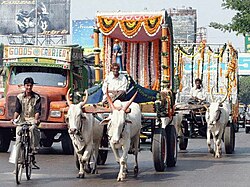Bos taurus indicus
Bos taurus indicus, commonly known as Indicus cattle or zebu, holds a significant place in the history, culture, and agriculture of various regions across the globe. Characterized by their distinct humps and pendulous ears, these cattle have been domesticated for thousands of years, serving as a vital source of food, labor, and economic sustenance for countless societies. From the vast plains of Africa to the vibrant landscapes of India, the presence of Indicus cattle resonates deeply within the fabric of human civilization.
Origins and Distribution:
The origins of Bos taurus indicus can be traced back to the ancient wild oxen of South Asia, particularly the Indian subcontinent. Through millennia of selective breeding, indigenous peoples gradually molded these wild ancestors into the diverse array of zebu breeds known today. The process of domestication likely began around 10,000 years ago, coinciding with the advent of agriculture in the region.
From its epicenter in South Asia, the influence of Indicus cattle spread far and wide, facilitated by trade, migration, and colonization. Today, these cattle are found in various parts of the world, thriving in diverse environments ranging from humid tropical forests to arid savannas. Notable regions where Indicus cattle are prominent include India, Africa, Southeast Asia, Latin America, and parts of the United States.
Distinctive Features:
One of the most striking features of Bos taurus indicus is its prominent hump, situated on the back between the shoulders. This distinctive anatomical trait serves several purposes, including fat storage, thermoregulation, and as a reservoir of nutrients during times of scarcity. The size and shape of the hump can vary among different zebu breeds, with some exhibiting larger and more pronounced humps than others.
Another characteristic feature of Indicus cattle is their pendulous ears, which hang loosely down the sides of the head. Unlike the upright ears of their Bos taurus counterparts, the pendulous ears of zebu provide additional surface area for heat dissipation, helping these animals cope with high temperatures prevalent in many of their native habitats.
In addition to their humps and pendulous ears, Indicus cattle often display a range of coat colors and patterns, including shades of gray, brown, black, and white. Some zebu breeds also exhibit distinctively marked faces or bodies, adding to the visual diversity within the species.
Adaptations to Environment:
Indicus cattle have evolved a remarkable array of adaptations that enable them to thrive in diverse environmental conditions. Their ability to withstand heat, humidity, and disease makes them well-suited to tropical and subtropical climates, where other cattle breeds may struggle. The hump, for instance, plays a crucial role in thermoregulation, helping to dissipate excess heat and conserve water.
Furthermore, the robust immune systems of Indicus cattle confer a degree of resistance to various pathogens and parasites commonly found in their native habitats. This resilience reduces the need for intensive veterinary interventions, making zebu breeds particularly well-suited to extensive or semi-intensive production systems.
Economic and Cultural Significance:
Indicus cattle hold immense economic and cultural significance in many parts of the world, where they serve as a primary source of meat, milk, leather, and draft power. In regions such as India and parts of Africa, zebu breeds are integral to traditional agricultural practices, providing essential traction for plowing fields and transporting goods.
Moreover, Indicus cattle play a central role in religious ceremonies, cultural rituals, and social festivities in numerous communities. In India, for example, certain zebu breeds are venerated as sacred animals and are revered as embodiments of various deities. Similarly, in parts of Africa, cattle are prized possessions that symbolize wealth, status, and prestige within society.
Conservation and Future Challenges:
Despite their cultural and economic importance, Bos taurus indicus faces several challenges that threaten their long-term viability. Encroachment of their natural habitats, competition with other livestock species, and the spread of diseases pose significant risks to zebu populations worldwide. Additionally, climate change and environmental degradation further exacerbate these challenges, placing additional stress on already vulnerable ecosystems.
Efforts to conserve and sustainably manage Indicus cattle are underway, driven by a combination of governmental initiatives, grassroots organizations, and international collaborations. These efforts focus on preserving genetic diversity, improving breeding practices, enhancing disease surveillance, and promoting sustainable livestock management practices.
Conclusion:
Bos taurus indicus, with its rich heritage, remarkable adaptations, and profound cultural significance, stands as a testament to the enduring relationship between humans and domesticated animals. As we navigate the complexities of the modern world, it is essential to recognize and appreciate the intrinsic value of these remarkable creatures and to work towards ensuring their continued survival for generations to come.
Bos Taurus Indicus Media
A Pillar of Ashoka, dating to the 3rd century BCE, depicting a zebu
Zebu pictured on a coin of the Indo-Scythian king Azes II, late first century BC
Zebu market in Madagascar
Hariana breed of zebu type cattle in north India
Draft zebu pulling a cart in Mumbai, India





